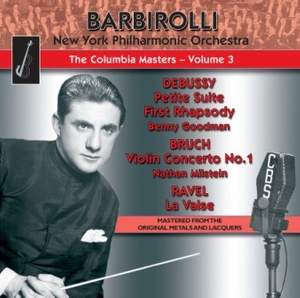These American Columbia recordings have been mastered from the original metals and lacquers and offer some amazing sound quality for recordings from 1940-1942. The contrast between Toscanini and Barbirolli was symbolic of the contrast between two generations of conductors and the altering role of conductors.
Toscanini was the supreme autocrat of the old school, ruling by terror, insult, tantrums and his own daemonic drive. Barbirolli, over thirty years younger, was the benevolent autocrat, more democratic, ruling through comradeship with his players, inviting them and the audience to share his own delight in music. The contrast in their philosophy was reflected in their interpretations: Toscanini inspired awe for the music he conducted; Barbirolli inspired love and affection.
Their different approaches are crystallized in their respective recordings of Verdi’s Otello and Requiem: the older man relentless, electric, dramatic in the extreme, incomparably exciting; the younger broader, with more humanity, many felicitous touches of detail, and caressing the phrases like a lover. Both are valid interpretations, both are true to the spirit of the music; both reveal different aspects of Verdi’s and of their own genius. It is overlooked that Barbirolli not only succeeded Toscanini in New York: that would have soon been accomplished, a nine-day wonder. For seven years he conducted almost alongside him, the one in Carnegie hall, the other in the NBC studio. Of course, Barbirolli was not then the great conductor he was to become, for most conductors improve with age, but recordings (commercial and off-air) show that he was very good and that the orchestra had a rich and sensitive sound.
(He himself confessed in his last years that he ‘sometimes smiled’ at the recollection of his younger interpretations; he constantly re-studied even the most familiar symphonies.)



